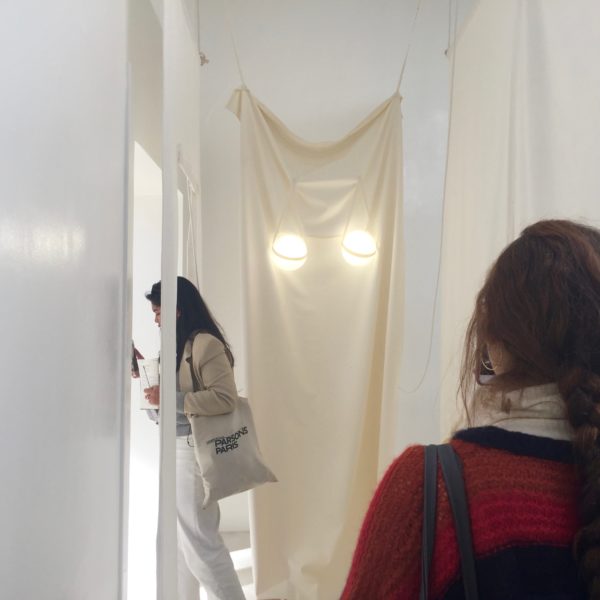Exploring Unconventional Spaces to Interact with Art in Modern Day Paris
For the first time at Parsons Paris, in the Fall of 2018 we are offering a class, taught completely in French, that introduces students to contemporary art and design within the Parisian cultural landscape. Paris Art Scene is taught by Emmanuel Cohen, who holds a Ph.D in Performance Studies and has dedicated a large portion of his career to research in XXth century art, the historical Avant-Gardes in Paris, encompassing Dadaism and Surrealism.
Emmanuel has created a unique class which integrates both English and French speaking students. Class and museums visits are conducted in French, and upon enrollment, students have the option to choose to write assignments in English or in French; this creates an immersive bilingual, unique class environment. Every two classes involves a different museum, gallery or cultural establishment visit around the city. The field trips explore the specificities of Paris as a place and its integration in the global world of art while also taking advantage of these opportunities to expand student’s experience with the language.
To give you a taste of what it’s like, Strategic Design and Management second-year student Michelle Rios writes about her experience in the class’ last visit to a cultural establishment in Montparnasse.
For this week’s class we visited one of Paris’ best kept secrets — Villa Vassilieff. When I say secret I do not mean that this place is exclusive in terms of access — in fact as you will read on it is quite the opposite! But what I do mean is that it has been able to stay out of the often too-crowded-to-visit art museum culture in Paris (think unbearable lines in the Louvre).
Villa Vassilieff is an art and research cultural facility which is situated in Marie Vassilieff’s former home. Every 3 months or so, visiting artists from around the world live and work in the atelier to produce work for the gallery space. The most unique quality of this space is that it lends itself as a home, welcoming to all who are interested to exchange and interact with artists and art for free. Anyone interested can come to the small library space, sit down and enjoy free coffee and treats and can pay whatever they wish. This remarkable coexistence and home-like setting is a way for Villa Vassilieff to preserve its rich heritage. During World War One, this house was used as a canteen for struggling artists of the time. The founder, Marie Vassilieff, was a Russian artist who moved to Paris in her early twenties. She settled in her atelier (where Villa Vassilieff formally stands) sometime between 1908 and 1911. Also a patron of her less well off colleagues, she then went to open a canteen in her studio for neighbouring artists who were facing hard living conditions during the war— amongst the most notable where Henri Matisse, Amedeo Modigliani, and Pablo Picasso.
Today—this hidden alley just across Montparnasse’s most controversial skyscraper operates very similar to the way it worked more than a century later, inviting artists and art lovers to share unique experiences. This is the mere beauty of this class— being able to discover the various historical and artistic sites which lie within the extremities of this city. We use Paris as our endless playground while also exploring the modern role of the art curator, writer and critic in the ever-changing contemporary art scene. We learn how to take a critical approach to “art as an experience”, an original idea at the stem of The New School’s pedagogical philosophy, to learn how to become better artists and spectators. Through these field trips, we don’t only refine our analytical skills, but we are able to become inspired by the work of the artists and curators to creatively reflect on our experiences. After every visit we have to submit a small “log book” entry where we can express our sentiments regarding the exhibit. I use these assignments as creative writing opportunities to explore my relationship to the themes presented in each exhibit. The combination between the freedom of having a classroom without boundaries and the ability to have freeform journaling assignments makes this class truly unique— and well, a great representation of the essence of Parsons Paris.
Visits in the Paris Art Scene class also include Musée d’Art Contemporain du Val-de-Marne (MacVal), Fondation d’entreprise Ricard, Musée de la Chasse et de la Nature, FIAC, Centre National de la Danse in Pantin, galleries in Le Marais and Belleville.




